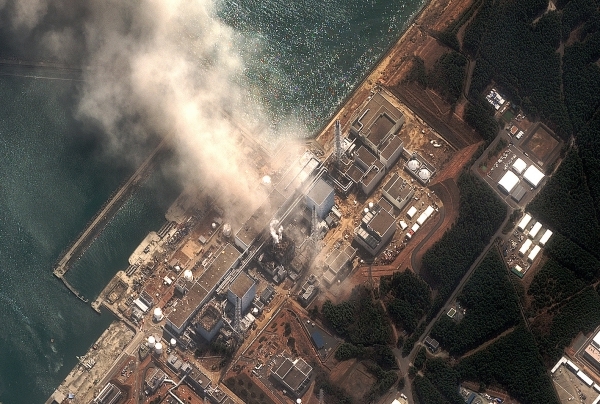PUTNEY — Probably because I am not a scientist, it never occurred to me to question where all the highly toxic elements were going after being constantly filtered out of the cooling water at Fukushima.
TEPCO, the owner of these incapacitated reactors, wants the world to believe that the water will be safe enough to dump into the Pacific ocean after the bulk of the most damaging radioactive elements are removed.
Let me explain:
March 11, 2022 was another terrible anniversary. On this date in 2011, a huge tsunami (tidal wave) took out a complex of six atomic reactors on the coast of Japan.
The three reactors that were operating at the moment of the disaster suffered what is known as a catastrophic meltdown, meaning that the heat generated by the reactor exceeds the heat removed by the cooling system - enough so that it melts the nuclear fuel inside.
Should the incredibly hot reactor cores be exposed to the elements, the same radioactivity that produces heat when all goes well will endanger all life in a large surrounding area.
No human can endure the extreme levels of radiation being emitted from these reactor cores; neither can the many robots developed for the job.
Therefore, the critical reactions in a catastrophic meltdown are not stoppable with current technology.
* * *
In Fukushima, a decade after the tsunami, the uranium-based fuel continues to do what that highly unstable element does: produce immense heat and toxins.
Because the fuel rods are untouchable, TEPCO must bomb the three reactor cores with water dropped from helicopters. This water instantly mixes with the most toxic elements on the planet, including strontium-90, cesium-137, and plutonium.
TEPCO has developed a filtration system (Advanced Liquid Processing System, or ALPS) for the water that has been exposed to the reactor core. While this water becomes less deadly over time - with lower amounts of the worst byproducts of fission - the process creates a concentrated sludge that contains all the toxic byproducts that have been filtered.
This sludge now sits in more than 3,000 containers that are in the process of being eaten away by the high levels of radioactivity. They will all need to be replaced by 2025, but TEPCO has yet to develop (and may never be able to) a containment vessel strong enough to hold this sludge in perpetuity.
And like many other nuclear problems, there is no good, safe solution.
* * *
Meanwhile, TEPCO has thousands of large vats of filtered water containing lots of tritium - “heavy water” - whose danger level is a source of constant debate among scientists.
Largely, the industry is happy to say you can practically bathe in the stuff safely. But tritium is radioactive, and dumping huge quantities into the Pacific Ocean will be bad for life around the world. The ALPS system also does not filter carbon-14, another dangerous element.
The environmental activism group Greenpeace suggests that since tritium has a short half-life (approximately 12.3 years), it would benefit the planet to store the water while the isotope becomes less toxic.
But TEPCO is shooting for beginning to discharge the contaminated water this year, much to the chagrin of the Japanese fishing community as well as the citizens of Korea and others in the Pacific region.
TEPCO says that it needs another 30 to 40 years to tackle the problem of Fukushima. Organizations such as Greenpeace argue that this proposed timeframe is not realistic and that it will take far longer.
Many anti-nuclear activists, and maybe all of us, will not be alive if and when we finally see a solution to this huge mess.
* * *
Here's something to watch out for: Ukraine has 15 nuclear reactors right now, and more being built. Half of its electricity is produced by nukes.
This is not great news for a country in chaos. Workers at these reactors need to be constantly on duty. What if the country falls apart and there is no pay for these workers? What if a bomb strikes a reactor, intentionally or accidentally? Who is ensuring that this dangerous waste will be isolated?
The toxic sludge at Fukushima, the high-level waste being stored at reactors all around the United States, the many nukes in Russia and eastern Europe - all need stability in perpetuity.
The waste will be lethal for up to 10,000 years. At this moment, we are facing lots of instability. We are facing a far-right political impulse pushing many in this country and in other parts of the world away from caring for the environment and toward chaos that keeps us from ensuring safe guardianship of lethal elements that we humans have created.
Meanwhile, the nuclear industry is now promoting “mini-nukes,” making believe that siting a group of 12 to 15 of these smaller entities is safer than one large reactor.
They all produce waste, which must be guarded forever; they all require the mining and refining of uranium (a process using lots of carbon), and they are far more expensive on the front end than solar or wind.
The more we learn about the current and future dangers of nuclear power, the more we must dispute the idea that nuclear is the solution to the climate crisis.
